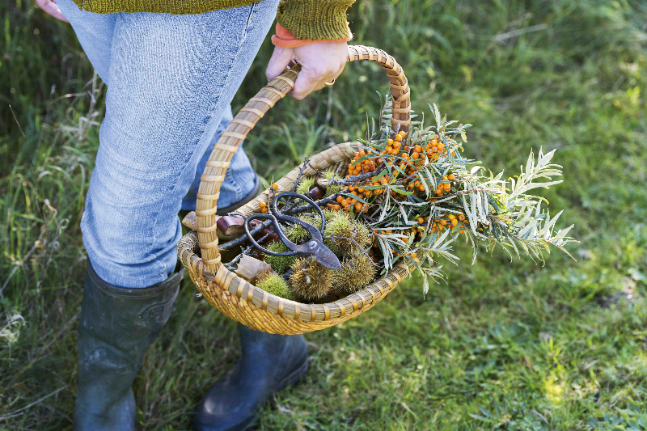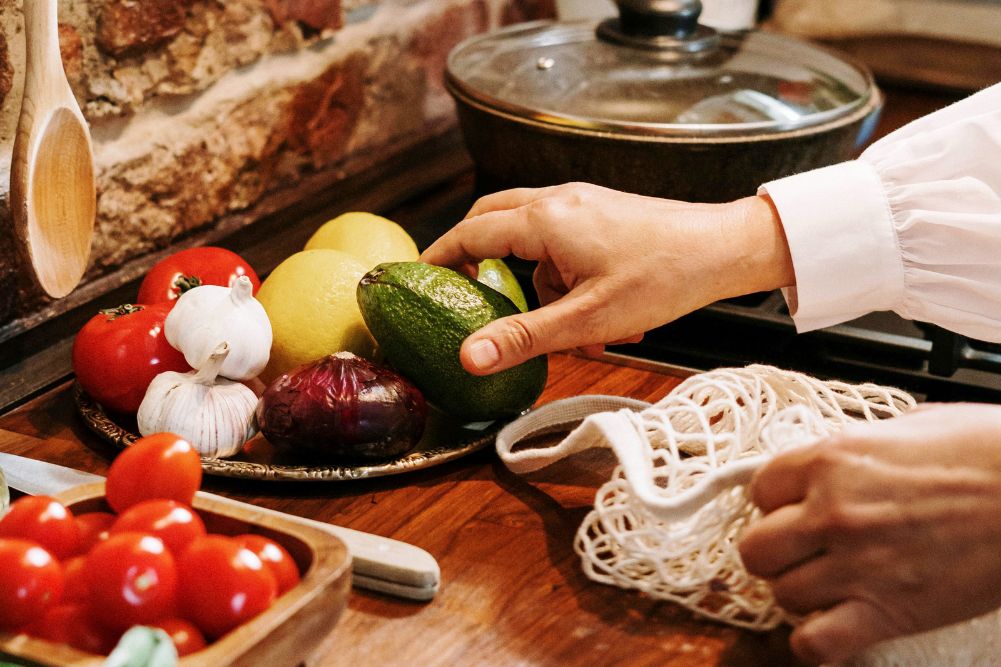Why you should eat like a Scandinavian
The French are pretty good at it, and so are the Chinese and Italians. But no one does it quite like the svelte Scandinavians.
They have a diet and lifestyle that place their obesity rates among the lowest in the world’s developed countries. Australia has the dubious honour of being at the other end of the spectrum. Aussies weigh in at the fifth heaviest population on the planet with an obesity rate of 28.3 per cent, while New Zealanders take third place with 31.3 per cent, according to 2014 OECD research.
Scandinavia includes Denmark, Sweden and Norway, and in the broader sense the Nordic region extends the area to Finland and Iceland. These countries in the Northern Hemisphere share chilly winters, expanses of wilderness, a culture that favours active lifestyles and good wholesome food, leading to a healthier lifestyle and trimmer waistlines. So how do they tip the scales in their favour?
The Scandinavians have always been a healthy lot but, around a decade or so ago, researchers at the University of Copenhagen in Denmark devised what they’ve coined the New Nordic Diet. It’s a diet that echoes the same sound nutritional principles as the Mediterranean Diet: foods that are fresh, wholesome and non-refined. It’s rich in healthy fruits and vegetables and chock full of healthy whole grains, with seafood and some lean meats.
At the very heart of the Scandinavian food culture is simplicity: wholesome foods that are tasty and pack a nutritional punch.
While the concept of eating as close to nature as possible and ditching processed foods isn’t new in Scandinavia, some of the principles of the New Nordic Diet are a refreshing change from standard modern diets. And it seems to be working.
To date, the research is backing the Nordic diet as an organically healthy and environmentally friendly way to not only lose weight but reduce blood pressure. One study of 147 obese men and women published in the American Journal of Clinical Nutrition in 2014 showed a 4.7kg weight loss among those on the Nordic diet. A 2013 study in the Journal of Internal Medicine showed improved cholesterol levels in those following the principles of the diet.
Scandinavians still embrace what the Vikings ate — ie, what they could grow and what they could hunt and gather: fish, pork, breads, honey and vegetables. But they’re sourcing more seasonal fruits and vegetables, more local produce (a field-to-fork concept) and more foraged foods. At the very heart of the Scandinavian food culture is simplicity: wholesome foods that are tasty and pack a nutritional punch. Skagen fish soup, almond cakes, caramelised potatoes, cockerel with baked root vegetables and artichokes, Scandinavian vegetable soup … no matter what’s on the menu, it’s clean, simple and in season.
And while here in sun-kissed Australia, with our rugged outback, surf beaches and lush rainforests, the climate and geography might be vastly different, the same principles can be applied. Food that’s clean, simple and in season, and a lifestyle that embraces family, fitness and a love of the great outdoors.
The joy of shared meals
With increasingly busy lifestyles, there are often scant opportunities to find time to sit and eat together. The Scandinavians make time.
Trina Hahnemann, Danish chef and author of The Scandinavian Cookbook, says one of the key elements of Nordic cookery is good food culture, which is taught at Home. According to Hahnemann, it’s not just the food they eat but how it’s eaten.
“While there is a growing fast-food culture, it’s not cheap, so most families can’t afford it often,” she says. “We also tend to sit down with our families to eat our meals, an important point which shouldn’t be underestimated.”
Community co-ops
Access to fresh produce isn’t always easy in the globe’s far north. One clever initiative is a volunteer-driven co-op in Denmark that distributes a staggering five tonnes of organic vegetables each week to more than 3000 members. Buying local supports farmers, keeps prices low and means lower food miles, plus you know the “story” of where the food’s sourced and you’re keeping in sync with the seasons.
Check out your local food co-op and support your local industries. Look for groups like Local Harvest that provide weekly food boxes with fresh leafy produce. Frequent your local farmers’ market — and source organic produce.
Foraged foods
Ants, cloudberries (or molter in Norwegian), wild mushrooms and even moss are used in Nordic cookery. Foraging for bush tucker like herbs, spices, berries and fruits can be a bit of a challenge, however, as it can mean foraging on government-owned land, which can get you in trouble, or foraging on someone’s private property, which can also get you in trouble (unless you’ve been given permission).
Start with foraging wild greens in your own yard (checking with local authorities to find out what’s poisonous and should be avoided) or grow some of your own native foods. Jude Mayall from Outback Chef says incorporating native foods into your diet begins with sourcing simple cooking substitutions. “Try warrigal greens in place of spinach in a stirfry, spicy apple muntries mixed with berries in pies or a little bush tomato in a sauce mix to give the dish a caramelised sundried tomato taste,” she says.
For more information, check out Australian Native Food Industry Limited website or MBANTUA.
Vegies with vitality
Root crops and cruciferous vegetables are all nutritional dynamos — and the Nordic diet embraces them with gusto. Aloysa Hourigan, senior nutritionist at Nutrition Australia, says carrots are high in beta-carotene, which your body converts to vitamin A; beetroot’s high in antioxidants; and garlic and onion are anti-inflammatory.
As for cruciferous vegies, they’re high in vitamin C and fibre, have a broad range of micronutrients and are low in kilojoules. “But don’t forget dark leafy greens,” says Hourigan. “The key is variety; no one group of vegetables will give you everything you need,” she says. And if you find some vegetables a little ho-hum, spice them up with herbs. Try different flavours together, like zucchini with cabbage and a little onion and garlic for flavour, or mix it up with different-textured foods, like squash and cauliflower.
Holy mackerel
Oily fish such as mackerel and herring (which feature prominently in the Scandinavian diet), along with sardines and salmon, are rich sources of omega-3s, which reduce the risk of heart disease. If you aren’t a lover of oily fish, you can still get what you need from plant-based omega-3 sources, including canola oil, soybeans, dark-green vegetables such as broccoli and spinach, walnuts and flaxseeds.
Rye bread
The Danes in particular enjoy rugbrød or ryebread: a flavoursome brown bread that’s usually served as open sandwiches topped with a variety of greens, sliced meats or egg. Rugbrød is a nutritional rock star; it’s full of wholegrain fibre and is sugar- and oil-free. Hourigan says that in Scandinavia rye is a traditional grain that’s a staple in their diet, whereas Australian farmers grow more wheat. “Wholegrain rye has a low GI and lots of B-group vitamins. Rye is a good choice, but wholegrain wheat bread is equally good,” she says.
Wild meats
In Scandinavian countries, game meats such as venison and elk are often eaten in favour of farmed meats. Kangaroo meat is a viable game meat, only around 2 per cent fat and high in protein. Wallaby meat is similar, but has a richer colour — and some say it’s tastier. Accredited practising dietician Claire Ward says wild meats can be far leaner than farmed meats. “If you look at animals in the wild that are physically active, they will in all likelihood be leaner than farmed animals who can’t roam as freely or may even be confined,” she says.
“Variety is the spice of life — there’s no reason why you can’t give game meats a try.”
The good oil?
In the Nordic diet, canola oil is the cooking oil of choice. The canola plant has been developed from the rapeseed plant through natural plant breeding methods over many years and not through genetic modification. However, you need to bear in mind that some canola oil is produced from genetically modified canola crops in Australia, so look for products that are organic, cold-pressed and non-GM.
According to The Dietitians Association of Australia canola oil is a source of unsaturated fat, one of the healthy sources of fat that make up an important part of a well-balanced diet. Use canola to bake and stirfry, and in dressings and sauces. [WellBeing does not advocate preferring canola oil over healthy fats like olive, avocado and coconut oils, but rather allowing it in the mix in small quantities.]
Friday’s candy
In Scandinavian countries like Denmark they have fredagsslik, which translates as Friday’s candy: the one day a week most children are allowed to eat chocolate and lollies. Not a bad idea. Some families in Western countries have high-sugar junk foods like these on the menu every day — and it’s just not healthy.
Ward says, to promote healthy eating, we need to start looking at foods in a different way. “Look at the core food groups, foods our bodies need for nutrition, as ‘everyday’ foods,” she says. These include fruits and vegetables, grains, lean meats, dairy, fish, eggs, tofu, nuts and seeds, legumes and beans. “Other foods (like chocolate and lollies) could be referred to as ‘sometimes’ foods, eaten sparingly and only every now and then,” she adds.
Waste not
Here in the land of plenty, we have overflowing rubbish bins and are up to our eyeballs in landfill. In Scandinavian countries, when it comes to food, not a scrap is wasted. What isn’t grilled, broiled or stewed is smoked, made into sausages or eaten as offal. In past generations, in countries like Australia, offal meats such as kidney, liver and tongue were served up for dinner, but modern Australian cuisine doesn’t really favour it. And that’s a shame. Offal is very high in vitamins, protein and iron. On the flipside, it can have quite a strong flavour and needs to be super fresh to be eaten. Ward says one reason offal isn’t served often is that those cooking it lack confidence in how to properly prepare it.
Before you start experimenting with cooking offal, source an offal cookbook or check online to garner some ideas, she says. If you’ve never tried it before, begin by adding a little at a time to dishes such as casseroles. If it isn’t palatable to you, don’t stress. “There are alternative protein-rich foods with a similar mix of nutrients, including beef, lamb or other protein sources like eggs, nuts and legumes,” she says.
Getting in the nudie
It’s not just diet but lifestyle habits that set Scandinavian countries apart from others. Take the sauna, for example. In Finland, a nation of 5.3 million, there are around 2 million saunas. It’s a centuries-old institution and very much a way of life.
Visit a family in Finland and chances are you’ll be invited to get off all your kit, sit in a hot box, then go outside and jump in a little hole in the ice or in a lake to cool down. There’s a lot of science behind the benefits of saunas: regular saunas can detoxify, reduce stress levels and boost feelings of wellbeing. Taking very regular saunas can also help you live longer, according to a study of over 2000 Finnish men by the University of Eastern Finland, conducted over 30 years. It showed the risk of dying from cardiovascular disease was halved.
Get on your bike
Exercise in Scandinavian countries is very much part of the way people live. In Denmark’s capital Copenhagen, 37 per cent of the population use bikes as a way to get to school or work. It probably helps that there are over 10,000km of bicycle routes criss-crossing the country, but even if you live in an area without bike paths, that’s no excuse.
Nordic walking
This exercise originating from Finland adds the use of modified ski poles to walking in an effort to force your upper body to move as well. This effectively ramps up the exertion and calorie burn. So what are you waiting for? Grab some walking poles and get out there.
Nordic diet principles
All set to dine like a Scandinavian? Incorporate the following into your meals.
- More fruit and vegetables (berries and root and cruciferous vegetables)
- More whole grains
- More oily fish
- Less farmed meat, more game
- More foraged (or bush tucker) foods
- More organic food
- Avoid food additives
- More seasonal produce
- More home-cooked food
- More offal
Sample some delicious Nordic recipes here.








